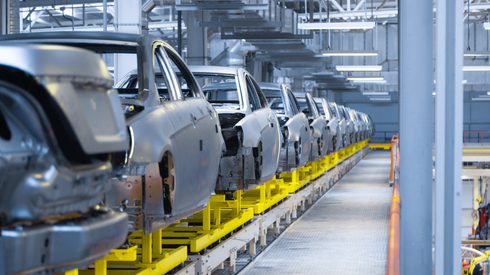Announced on June 14, the new legislation requires a compulsory carbon footprint declaration and a “digital battery passport” for batteries used in electric vehicles (EV), light means of transport (LMT) such as electric scooters and bicycles and rechargeable industrial batteries with a capacity above 2kWh.
The new regulation also foresees stricter waste collection targets for lithium-ion batteries and minimum levels of materials to be recovered from waste batteries.
For lithium, that target is 50% by 2027, increasing to 80% by 2031. For copper, lead, cobalt and nickel, those targets are 90% by 2027 and 95% by 2031.
“The European lithium recovery rate target of 50% is typically already being hit so this is a not a particularly ambitious target,” Fastmarkets analyst Julia Harty said.
The legislation also requires that battery producers use recycled content eight years after the new regulation comes into force. It foresees that 16% of cobalt, 85% of lead, 6% of nickel and 6% of lithium used in batteries will come from recycled sources.
“China has highest recycling recovery rates, and the rest of the world is trying to catch up with steadily increasing targets,” Harty said.
In China, there are mandatory recycling recovery rates of 98% for cobalt and nickel and 85% for lithium.
The country has an estimated 230,000 tonnes per year of battery recycling capacity, 150% larger than the total capacity in Europe, according to the International Energy Agency (IEA).
Harty said that lithium-ion battery collection and recycling rates varied significantly regionally, with developed countries typically having higher rates.
“Recycling provides security of supply for regions with low natural resources and reduces dependency especially from regions with geopolitical instability,” she added.
“I think a lot of new regulation [to protect supply chains and ensure circular economy] will be enacted and we, as the industry, will try to use recycled materials. This is beneficial not only for the environment and the society to drive a better economy, but also for us as a company; it is our advantage,” Moshiel Biton, CEO and co-founder of the battery anode and cathode technology company, Addionics said.
Addionics produces innovative anodes and cathodes for use in new battery technologies, including lithium-ion, silicon and solid-state batteries and their products are chemistry agnostic, according to the company.
The company uses recycled copper and aluminium in their anodes and cathodes.
Biton said that the US produced “mountains of scrap copper,” which gets shipped abroad to be processed.
The US exports most of its copper scrap to China, having exported 323,485 short tons of copper scrap to this country in 2022, according to the US International Trade Commission data.
“We want to change that equation,” Biton said.
While the attention around batteries was concentrated on their chemistries, the current collectors – the foils – have been “like the unpopular kid in the class that no one wanted to play with,” according to Biton. “This component of the batteries was overlooked,” he said.
Addionics dissolves copper scrap, turning them into copper ions, which are then used to make the anode in batteries. This is the widely accepted procedure when making copper foil, however, their three-dimensional structure is what is different, according to Biton.
He explained that the traditional two-dimensional current collector architecture leaves a lot of space unutilized and by using a three-dimensional structure, they are able to create more surface so the current collectors can load more active material, increasing energy and power of the battery.
Addionics is planning to build a 46GWh capacity in the US by 2027. The company is currently in negotiations to choose its site.
Want more insights and forecasts for the battery recycling and black mass market?
Keep up to date with global market insights and predictions for the battery recycling market with the Fastmarkets NewGen Battery Recycling Outlook.






